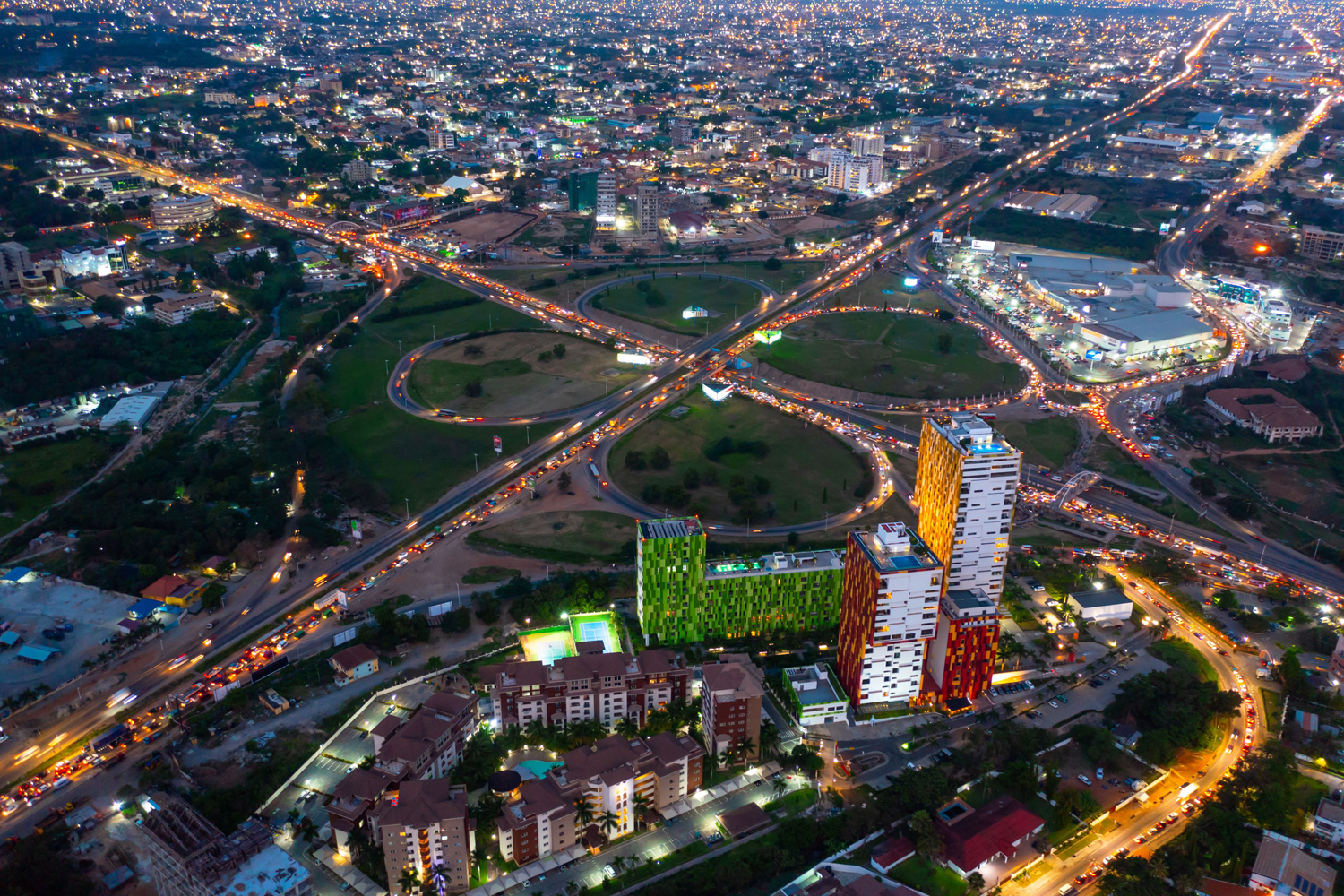
10 THINGS TO DO IN GHANA
- VISIT A PIONEERING ECOTOURISM PROJECT IN BONKRO
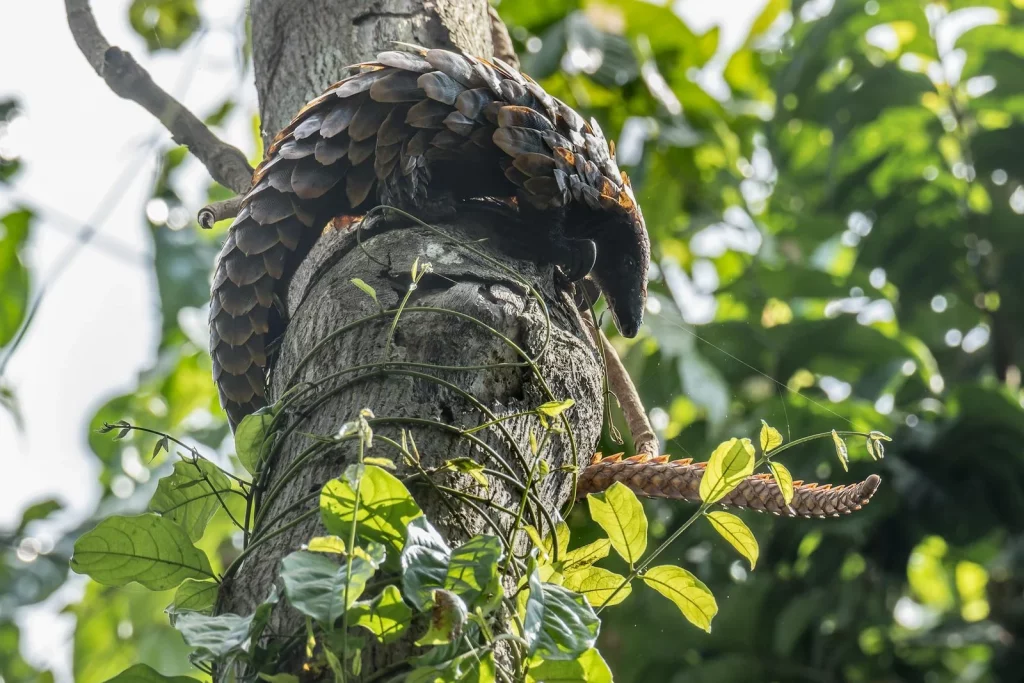
Mark’s top suggestion for travelers is to visit the community project that he and his sustainable tourism company established in Bonkro, a village so small you can’t see it on Google Maps. It’s surrounded by a few thousand hectares of rainforest which were being cut down by illegal logging, while wildlife was being illegally hunted. Considering the area is home to rare wildlife – including the endangered yellow-headed Picathartes, an endangered Upper Guinean bird species, and two species of pangolin – preserving it is important.
“We have set up an initiative where we actively protect the rainforest, and work in the community to showcase the benefits of sustainable tourism,” Mark says. “We’ve built a school attended by about 300 local children, and accommodation for tourists – money goes back into the community fund when people stay there. We also sponsor a forest committee, with rangers to patrol the forest and ensure no illegal activities is going on.
“As part of this project, we’ve introduced environmentally-conscious farming techniques. We’re trying to get the communities to step back from their traditional cocoa and palm plantation farming, and showing them they can change over to beekeeping, African snail farming (an expensive delicacy in Ghana) or even bush meat farming so they don’t have to hunt. We also sponsor apprenticeships to help people become self-sufficient, and the local boys’ and girls’ football teams – they all wear Arsenal kits.
“When we take groups here, we learn about the local food with cooking lessons. You also learn how to process gari, which is a staple food in the area, and visit a fair trade cocoa cooperative. We have an outdoor cinema; the local villagers come down and we watch African movies together. We explore the reserve as well – there are some nice biking trails. We also do butterfly walks and it’s good for bird watching as well.”
2. CLIMB MOUNT AFADJATO
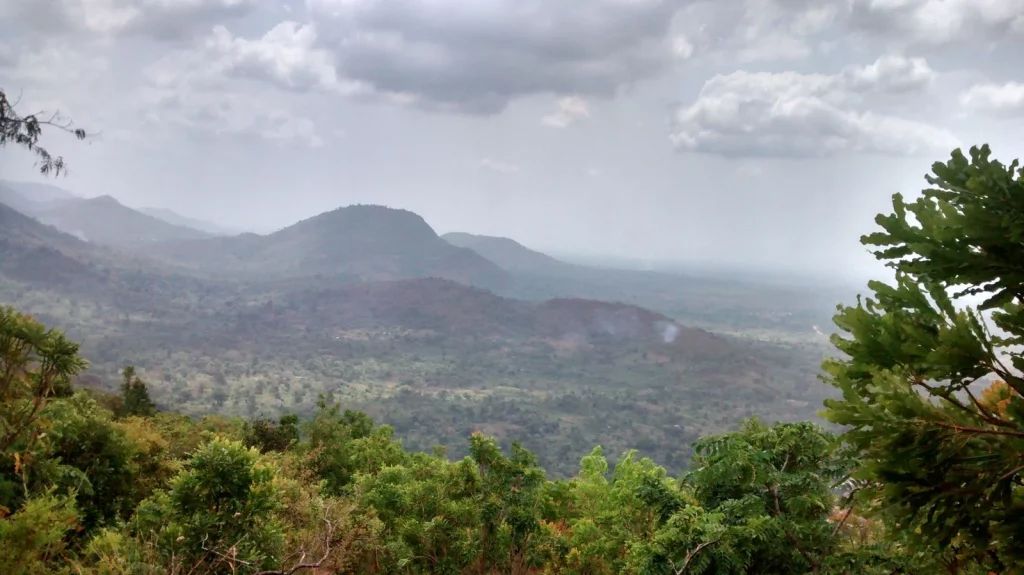
Mark describes the hilly Volta region as one of the best spots for hiking in Ghana, particularly since it contains some of Ghana’s highest peaks, such as Mount Afadjato (885m/2,903ft).
“It’s a nice walk to the summit,” Mark says. “But don’t underestimate it – the humidity and the environment make it seem a bit more challenging than it would in Europe.”
The trail takes you up a steep, muddy path through the forest – you’ll be using boulders and tree roots to pull yourself up. After a lung-bursting climb, you’ll see a sign that reads “Hey, don’t give up – you have just clocked 221.3m.” These signs will continue to accompany you on the steep climb – “Don’t give up, quitters never win, you’re 664m to the summit,” reads a later one.
After several hours of climbing you’ll emerge onto the summit, where you’ll have a panoramic view of the rainforest-carpeted peaks of the Volta region, draped in cloud. Descend the way you came and stop off for lunch in the nearby village of Wli. Once refreshed, you can continue hiking through the forest to nearby Wli Falls, believed to be the highest in West Africa. There’s a natural pool there where you can go for a dip.
3. CYCLE AND HIKE THE FOREST TRAILS OF ANKASA NATURE RESERVE
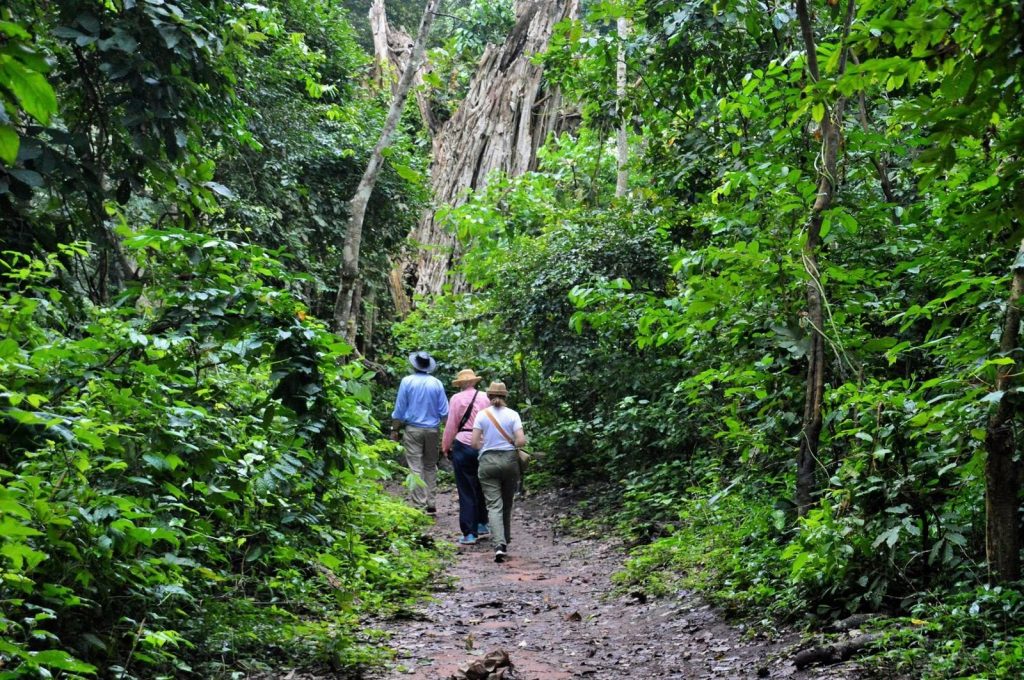
Ankasa Nature Reserve, near the border with Côte d’Ivoire, is one of Ghana’s most pristine tracts of Upper Guinean rainforest. It’s one of the most biodiverse areas in West Africa, home to forest elephants, chimpanzees, bongo antelopes, Diana monkeys, and numerous species of birds and reptiles. The landscape is one of towering mahogany trees, twisting lianas, and rare ferns and orchids; of rivers and gushing waterfalls. It’s known for the Bamboo Cathedral, a section of forest where giant bamboo grows in a dramatic arch shape.
According to Mark, the best ways to explore Ankasa are on foot, or by mountain bike.
‘It’s got some great bike trails through the forest,” he says. “We’ve been working with volunteers and school groups building bridges in the rainforest, cutting more trails. You can also visit the local villages and see how they live – it’s a nice atmosphere, and because it’s quite remote you don’t see many tourists there.”
JOIN THE AKWASIDAE FESTIVAL CELEBRATIONS
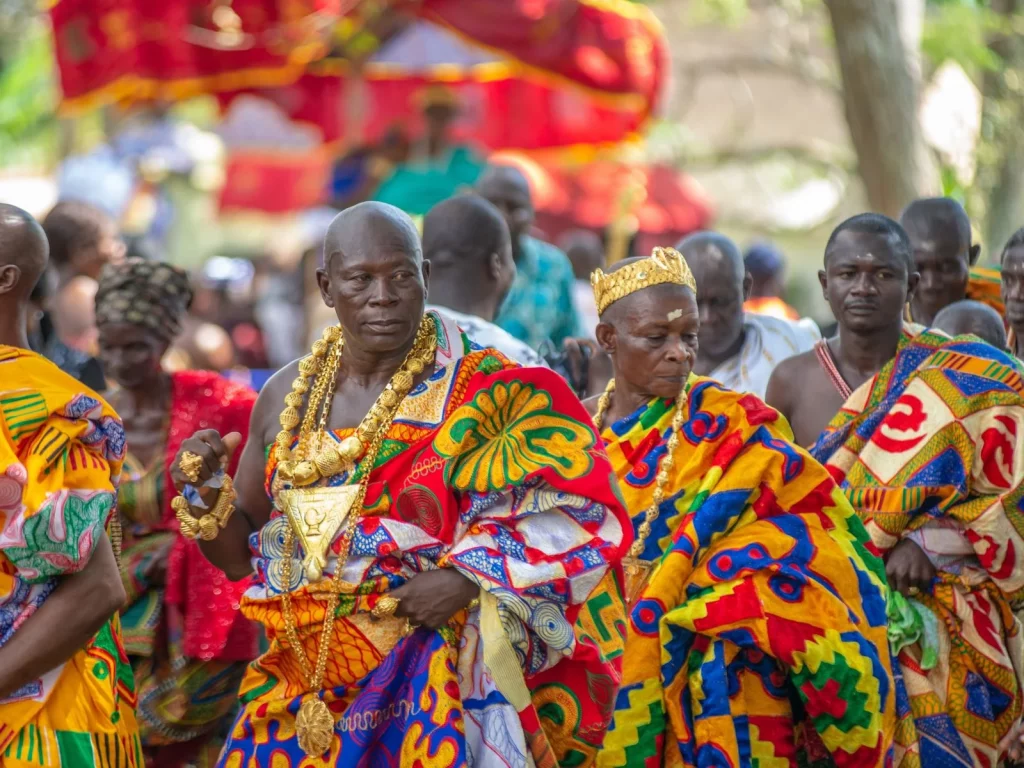
If you’d like to learn more about the Ashanti people, head to their ancient capital of Kumasi for the Akwasidae celebrations, which happen every 42 days (every sixth Sunday).
“Akwasidae is a festival for the Ashanti king. It’s the only king that Ghana recognizes – the Asantehene,” Mark says. “You have the King and then under the king, you have paramount chiefs who rule areas in his region, and then you have sub-chiefs under them as well. All of these chiefs and paramount chiefs pay homage to the King every sixth Sunday in his palace in Kumasi, Manhyia Palace.
“The king sits in state and all the chiefs pay homage to him, wearing their traditional costumes. There’s lots of music and dancing – it’s a very interesting experience, which you can go and see for yourself.”
GO KAYAKING ON THE GOLD COAST
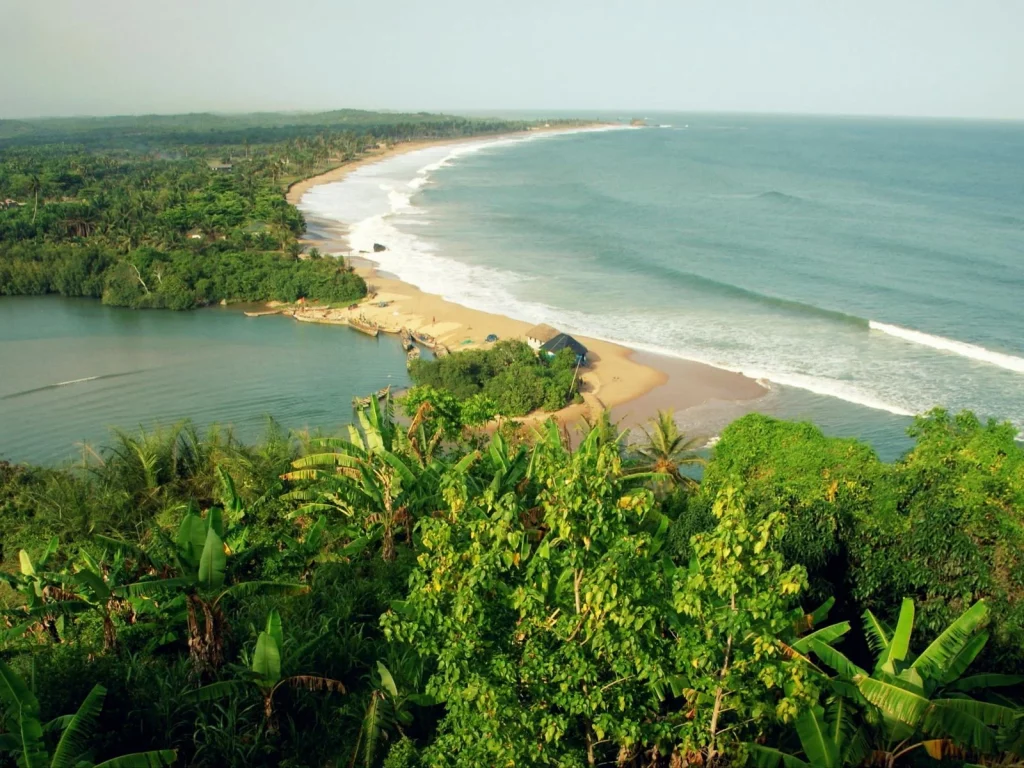
Ghana’s Gold Coast is so named because it was an important source of gold (and was consequently fought over by colonial powers). However, you’ll also find beautiful beaches of golden sand, fringed with coconut palms here.
Mark recommends stopping to relax on one of Ghana’s beaches after an adventurous hiking and sightseeing trip across the country.
“I recommend Brenu Akyninim, where there’s a gorgeous beach,” he says. “You can also explore the nearby fishing villages and meet the community. Best of all, you can get there by kayak. You’ll start to kayak across this saline coastal lagoon, and you’ll come out onto the open beach.”
TACKLE THE CANOPY WALKWAY IN KAKUM NATIONAL PARK
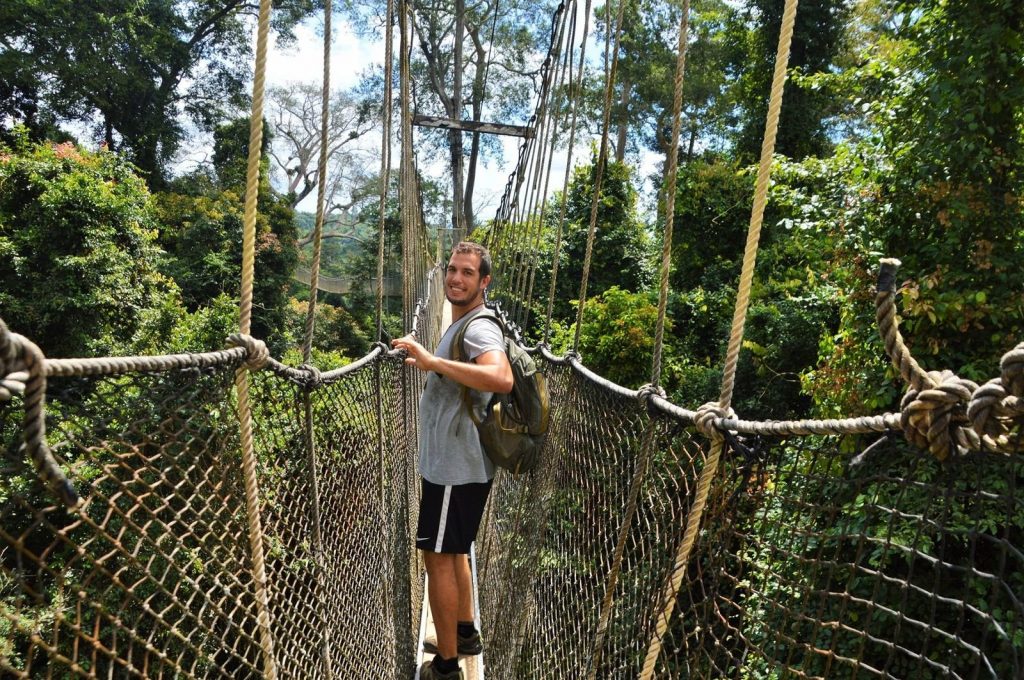
Kakum National Park is a protected tropical rainforest located in the Central Region of Ghana. The park is renowned for its rich biodiversity, housing hundreds of species of birds, mammals, amphibians, and insects, including forest elephants, bongos, leopards, and various monkey species.
One of the park’s most iconic attractions is the Kakum Canopy Walkway, a series of seven suspended bridges that stretch about 350 meters (1,150ft) long and rise to a height of 40 meters (130ft) above the forest floor. Built-in 1995 by a group of Canadian engineers, the canopy walkway was designed to enhance eco-tourism while allowing people to experience the rainforest in a low-impact, sustainable way. It provides stunning aerial views of the rainforest and provides a rare opportunity to observe the diverse flora and fauna from the treetops.
“We like to go on the walkway when it’s not open to the public, so we arrange an early opening trip and can get there for first light, or we can stay after it’s closed for sunset,” says Mark. “This gives it a whole new feel as you haven’t got lots of tourists there as well – it’s also when wildlife is most active.”




